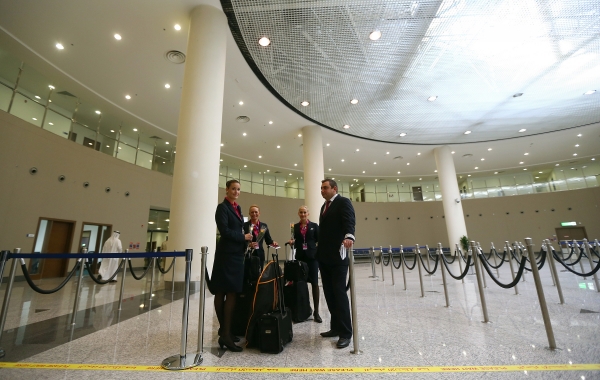 Dubai this week opened its second airport, Al Maktoum International, which aims to become the world?s largest in terms of passenger capacity.
Dubai this week opened its second airport, Al Maktoum International, which aims to become the world?s largest in terms of passenger capacity.
For the time being, the new airport can accommodate 5 million passengers per year. But the plan is that by 2030, with the opening of five runways, 160 million passengers will be making their way through Al Maktoum International each year. The new airport will take some of the pressure off Dubai International, which welcomed 57 million passengers in 2012.
Today, more travellers are passing through Dubai than ever before, and all signs indicate that the Emirati city?s passenger traffic will only increase over the coming years. ?Dubai is a four-hour flight away from one third of the world?s population, and an eight-hour flight from two thirds,? notes Pascal Maigniez, the director of Dubai Tourism and Commerce Marketing (DTCM) for the France and Benelux region.
Dubai?s strategic geographic location ? between Europe, Africa and Asia ? has been vital to making it a hub of international exchange, not only in terms of tourism, but also in terms of business and culture.
20 million visitors by 2020
The top destination in the Middle East and the 7th most visited city in the world, Dubai and surrounding areas already welcome 10 million tourists per year, according to Maigniez. Dubai aims to double the number of tourists by 2020 and to triple revenues from the tourism industry, which currently represent 10 per cent of the GNP. In preparation for this influx of guests, the country is expanding its infrastructure in the tourism and hospitality sector. To the 80,000 rooms already available in Dubai?s 600 hotels (including 15 opened this year), the city plans to add 10,000 rooms by 2015.
The city is known for its extensive offering of luxury hotels, such as the five-star Zabeel, recently opened by Marriott. However, half of the new hotel development projects are for building more affordable accommodations, with plans to open hotels in the middle-range from the international Holiday Inn, Pullman or Ibis chains.
Click here to read more.

